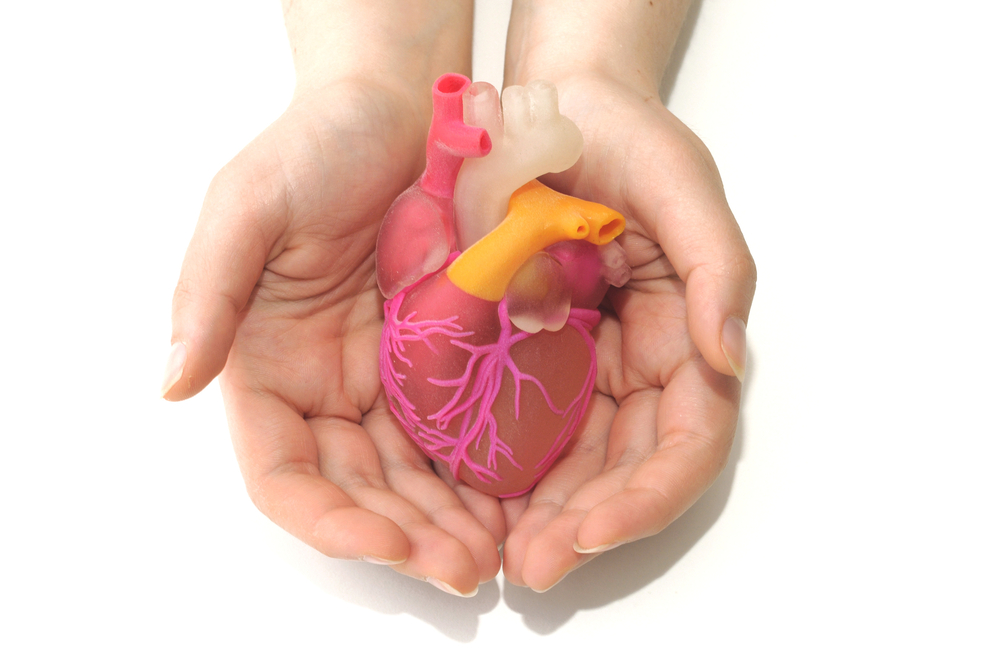Cx43 Protein May Be Key to Preventing Heart Disease in DMD, Mouse Study Suggests

Altering connexin 43 (Cx43) — a protein involved in heart function — in cardiac muscle cells protected against heart disease in a mouse model of Duchenne muscular dystrophy (DMD), a study found.
These results suggest targeting Cx43 may prevent heart disease in people with DMD.
The study, “Prevention of Connexin43 remodeling protects against duchenne muscular dystrophy cardiomyopathy,” was published in the Journal of Clinical Investigation and led by researchers at Rutgers New Jersey Medical School.
Duchenne is caused by mutations in the DMD gene that result in the production of little to no dystrophin, a protein essential for muscle tissue integrity. Dystrophin deficiency causes skeletal and heart muscles to weaken over time, impairing lung and heart function.
Cardiomyopathy, a heart-muscle disease that limits the heart’s ability to pump blood, is a common and serious complication in DMD. While the underlying mechanisms of cardiomyopathy in DMD remain largely unknown, “connexins are emerging as therapeutic targets for heart failure,” the researchers said.
Connexins are subunits of gap junctions, channels that allow communication between neighboring cells. A gap junction is formed by two hemichannels — composed of six connexins each — in adjacent cells at a site called an intercalated disc. Regulating connexins in a gap junction involves, in part, a chemical process called phosphorylation.
In the heart, connexins and gap junctions are responsible for maintaining fast electrical conduction between cells, allowing synchronous contraction. Cx43 is the most abundant connexin in the body, and is present at high levels in heart muscle cells.
Cx43 relocation to places in these cells other than intercalated discs (a process called remodeling) has been associated with heart dysfunction, including in DMD. Studies in animals have shown that lower levels of Cx43 phosphorylation, specifically in three serine amino acids, promoted Cx43 remodeling and arrhythmias. (Amino acids are the building blocks of proteins.)
The Rutgers researchers previously showed that Cx43 remodeling in heart muscle cells contributes to the development of arrhythmias in a mouse model of DMD, suggesting that therapeutic approaches targeting Cx43 could potentially prevent arrythmias in people with the disease.
They found a way to impede Cx43 remodeling and protect against arrythmia and cardiomyopathy in mice engineered to mimic symptoms of DMD. When they analyzed human and mouse cells, they found that levels of serine-Cx43 phosphorylation in heart muscle cells were significantly lower in the mouse model and in DMD patients than in unaffected mice and people.
“These results suggest that a reduction in [serine] phosphorylation, a key mechanism of Cx43 remodeling in other cardiac [diseases], may also play an important role in DMD Cx43 remodeling,” the researchers said.
They then genetically modified mice mimicking DMD to produce a Cx43 protein in which three serines were replaced by amino acids chemically similar to a phosphorylated serine.
The substitution significantly curbed Cx43 remodeling, corrected several abnormalities characteristic of heart muscle cells in DMD, and protected the mice against arrhythmias and late-stage cardiomyopathy.
The study also gave researchers a better understanding of the underlying mechanisms of Cx43 remodeling in heart muscle cells.
Abnormal organization of microtubules — protein fibers in the cytoskeleton involved in intracellular transport of molecules — contributes to excessive production of potentially harmful reactive oxygen species in heart cells affected by DMD, the researchers concluded. This leads to reduced serine-Cx43 phosphorylation and Cx43 remodeling, they said.
“We provide strong evidence for the microtubule cytoskeleton as a mediator between dystrophin loss and Cx43 remodeling, a previously unestablished relationship in DMD hearts,” the researchers said.
“Medical advances have managed to slow down the disease progression in most muscles in the body, but there are yet to be any discoveries that target or prevent deterioration of the DMD heart, which remains the number one killer among these patients,” Eric Himelman, a PhD candidate at Rutgers and the study’s first author, said in a press release.
“Therapies based on our finding may help prolong the lives of muscular dystrophy and other heart disease patients,” Himelman said.
“The clinical potential for targeting Cx43 in the treatment of DMD-cardiomyopathy is strengthened by the growing number of reported Cx43-based therapeutics approaches for treatment of cardiac [diseases],” the investigators said.






